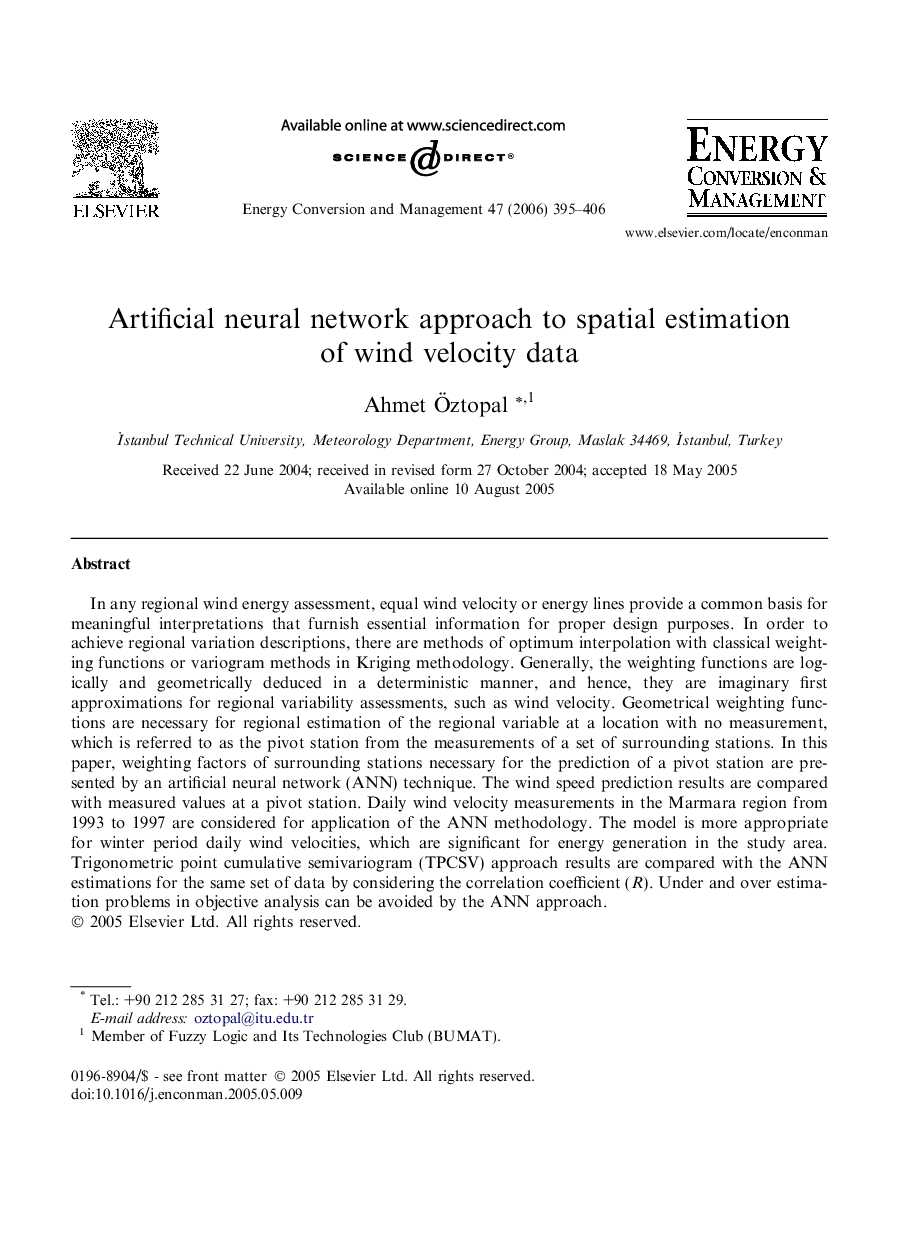| Article ID | Journal | Published Year | Pages | File Type |
|---|---|---|---|---|
| 773142 | Energy Conversion and Management | 2006 | 12 Pages |
In any regional wind energy assessment, equal wind velocity or energy lines provide a common basis for meaningful interpretations that furnish essential information for proper design purposes. In order to achieve regional variation descriptions, there are methods of optimum interpolation with classical weighting functions or variogram methods in Kriging methodology. Generally, the weighting functions are logically and geometrically deduced in a deterministic manner, and hence, they are imaginary first approximations for regional variability assessments, such as wind velocity. Geometrical weighting functions are necessary for regional estimation of the regional variable at a location with no measurement, which is referred to as the pivot station from the measurements of a set of surrounding stations. In this paper, weighting factors of surrounding stations necessary for the prediction of a pivot station are presented by an artificial neural network (ANN) technique. The wind speed prediction results are compared with measured values at a pivot station. Daily wind velocity measurements in the Marmara region from 1993 to 1997 are considered for application of the ANN methodology. The model is more appropriate for winter period daily wind velocities, which are significant for energy generation in the study area. Trigonometric point cumulative semivariogram (TPCSV) approach results are compared with the ANN estimations for the same set of data by considering the correlation coefficient (R). Under and over estimation problems in objective analysis can be avoided by the ANN approach.
